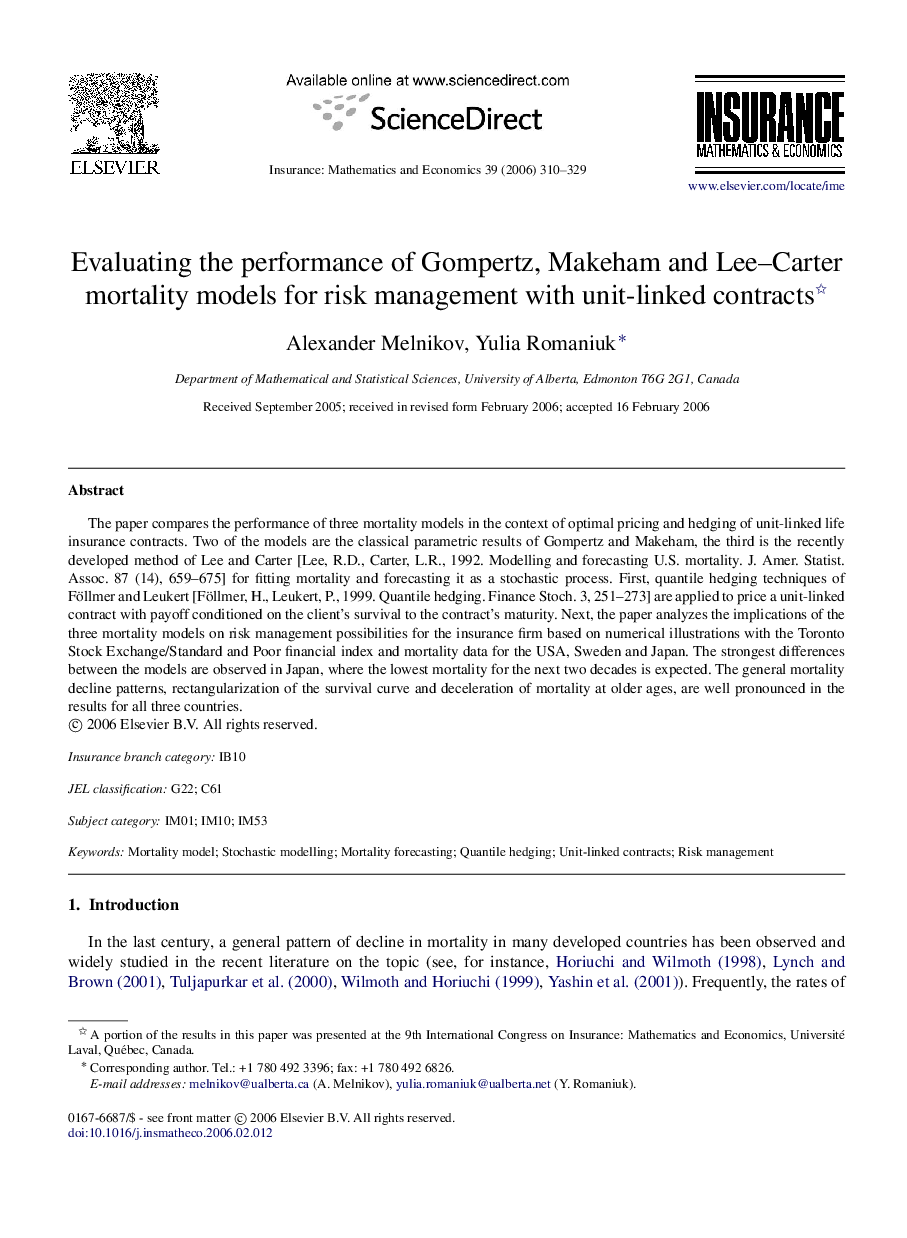| Article ID | Journal | Published Year | Pages | File Type |
|---|---|---|---|---|
| 5077637 | Insurance: Mathematics and Economics | 2006 | 20 Pages |
Abstract
The paper compares the performance of three mortality models in the context of optimal pricing and hedging of unit-linked life insurance contracts. Two of the models are the classical parametric results of Gompertz and Makeham, the third is the recently developed method of Lee and Carter [Lee, R.D., Carter, L.R., 1992. Modelling and forecasting U.S. mortality. J. Amer. Statist. Assoc. 87 (14), 659-675] for fitting mortality and forecasting it as a stochastic process. First, quantile hedging techniques of Föllmer and Leukert [Föllmer, H., Leukert, P., 1999. Quantile hedging. Finance Stoch. 3, 251-273] are applied to price a unit-linked contract with payoff conditioned on the client's survival to the contract's maturity. Next, the paper analyzes the implications of the three mortality models on risk management possibilities for the insurance firm based on numerical illustrations with the Toronto Stock Exchange/Standard and Poor financial index and mortality data for the USA, Sweden and Japan. The strongest differences between the models are observed in Japan, where the lowest mortality for the next two decades is expected. The general mortality decline patterns, rectangularization of the survival curve and deceleration of mortality at older ages, are well pronounced in the results for all three countries.
Keywords
Related Topics
Physical Sciences and Engineering
Mathematics
Statistics and Probability
Authors
Alexander Melnikov, Yulia Romaniuk,
